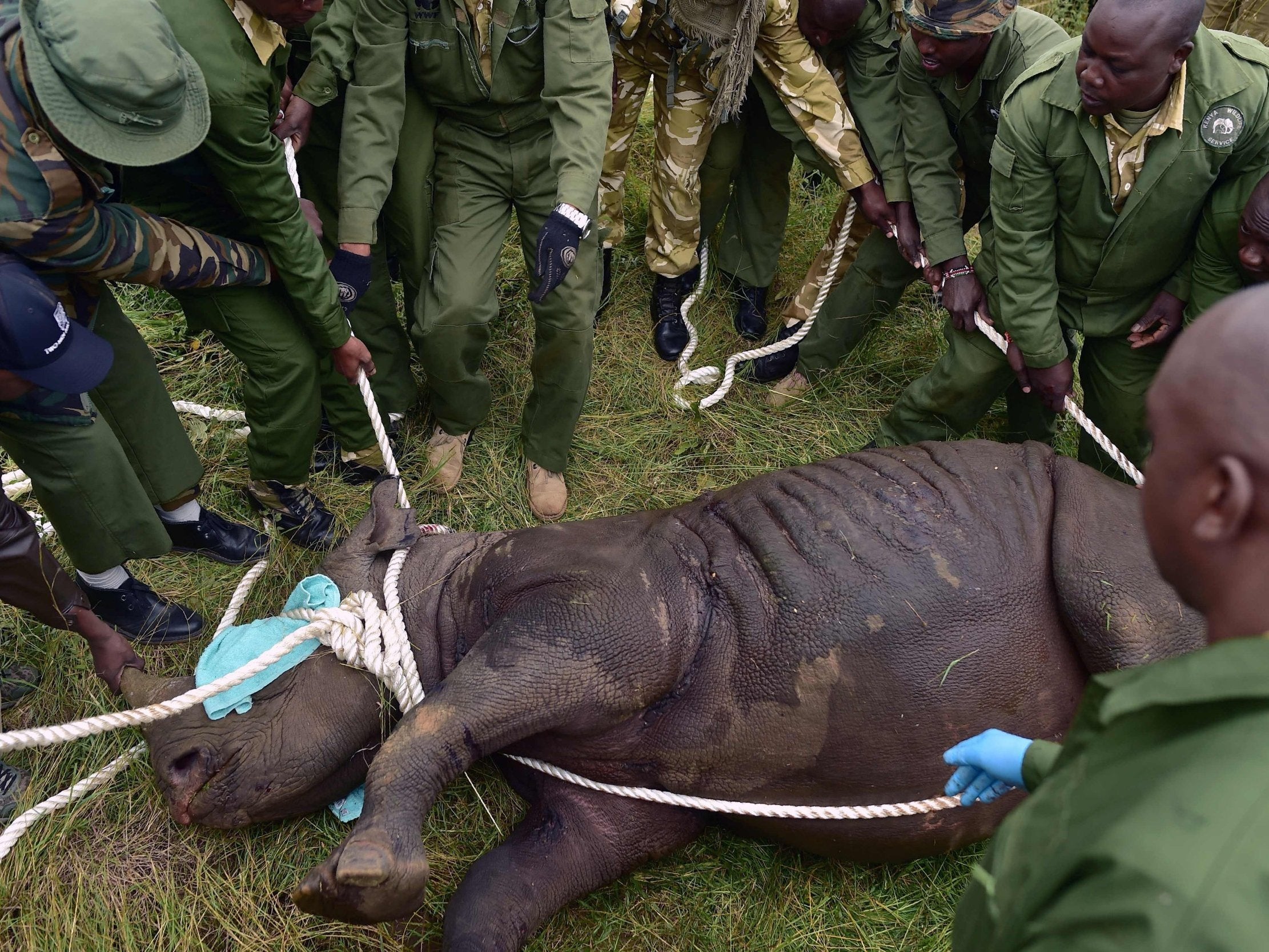'Complete disaster' as eight out of 11 endangered black rhinos die of salt poisoning
Salt poisoning believed to behind deaths at new sanctuary in Tsavo East

Your support helps us to tell the story
From reproductive rights to climate change to Big Tech, The Independent is on the ground when the story is developing. Whether it's investigating the financials of Elon Musk's pro-Trump PAC or producing our latest documentary, 'The A Word', which shines a light on the American women fighting for reproductive rights, we know how important it is to parse out the facts from the messaging.
At such a critical moment in US history, we need reporters on the ground. Your donation allows us to keep sending journalists to speak to both sides of the story.
The Independent is trusted by Americans across the entire political spectrum. And unlike many other quality news outlets, we choose not to lock Americans out of our reporting and analysis with paywalls. We believe quality journalism should be available to everyone, paid for by those who can afford it.
Your support makes all the difference.Eight critically endangered black rhinos died of suspected salt poisoning after being moved hundreds of miles across Kenya to a new national park.
The loss of the animals at a time when only around 5,000 remain on the planet was described as “a complete disaster” by conservationists.
Officials are now investigating whether any negligence by staff is behind the deaths at Tsavo East National Park, which is being supported by the World Wildlife Fund (WWF).
Tourism minister Najib Balala announced on Friday he had suspended further transfers of rhinos while independent experts are consulted.
The Ministry for Tourism and Wildlife described the deaths of eight out of the 11 rhinos moved from Nairobi and Nakuru National Parks as “unprecedented”.
“Preliminary investigations by veterinary teams attribute the deaths to salt poisoning as a result of taking water of high salinity on arrival in the new environment,” it said in a statement.
“The high salt levels lead to dehydration that triggers thirst mechanism, resulting in excess water intake of the saline water that further exacerbates the problem.
“Disciplinary action will definitely be taken, if the findings point towards negligence or unprofessional misconduct on the part of any KWS (Kenya Wildlife Service) officers.”
The three remaining rhinos at Tsavo East have been moved out of the sanctuary and are being given fresh water while being monitored by vets.
Results from the postmortem and forensic investigations have not yet been released by the ministry.
The black rhino population plummeted from around 70,000 in 1970 to to just 2,410 in 1995 before recovering to between 5,000 and 5,500 today, according to the Save the Rhino charity.
Previous transfers of a total of 149 rhinos in Kenya between 2005 and 2017 resulted in only eight deaths, according to the ministry for wildlife.
“The eight dead rhinos were among 11 that had been moved to the sanctuary in an initiative to start a new population in line with the National Rhino Conservation and Management Strategy,” said Mr Balala.
A further three rhinos were due to be moved as part of the strategy but are still at Nakuru national park and are “safe and sound”, according to the ministry.
Describing the deaths as a “complete disaster”, Kenya conservationist Paula Kahumbu of WildlifeDirect said: “Moving rhinos is complicated, akin to moving gold bullion, it requires extremely careful planning and security due to the value of these rare animals.
“Rhino translocations also have major welfare considerations and I dread to think of the suffering that these poor animals endured before they died.”
It follows the death of the world’s last remaining male northern white rhino in Kenya in March.
Additional reporting by Associated Press.
Join our commenting forum
Join thought-provoking conversations, follow other Independent readers and see their replies
Comments